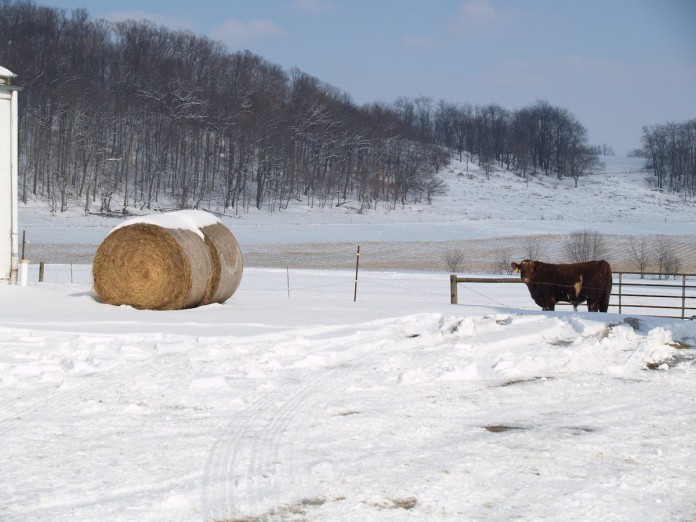It is always a good idea to look at something and analyze what are the visible issues at that moment. Sometimes it is easy to guess what most people see when they look out over their farms.
I can say with a good level of confidence that most of you reading this are thinking mud. Mud created from the cows or any livestock, or possibly mud from the machinery to feed the animals. More than likely both!
Just because all your farm looks the same for a time period does not mean you should treat it the same way in February as you would in July. Think about your pastures and how they grow differently at different times of the year. Remember how that pasture behaves in the spring and summer. I am sure most people have areas that have poor drainage so it might not be ideal for grazing early in the spring. There might even be fields that are always wet. There are areas that just have better drainage and typically perform better than others.
Examining the soil profile starting at the surface and working our way down, we see differences in plants, animals and insects, both beneficial and harmful. We also must examine microscopic organisms, and realize that all levels have predation at some level. Take these considerations when you are out there running machinery, pre-setting bales and moving animals.
Where to start
Ideally, you could have a nice field that has good drainage, quality forage and plenty of water. This would be a great place to start grazing in the spring. This would be a field that you would not want to tear up needlessly. This could help you start the grazing season earlier and save you some money on both supplemental feed and possible pasture renovations.
I will add a caution here about the potential for bloat and grass tetany due to aggressive foraging early in the spring. Make sure you do not release cows that have been fed lower-quality hay all winter into high-quality fresh forage all at once. This can cause gas buildup and lead to suffocation if not treated quickly. To prevent this, make sure the animals are introduced slowly and with a belly full of hay to dilute the intake of too much soluble material, too quickly. Also make sure animals have sufficient minerals, especially high in magnesium to prevent tetany when grass grows quickly and can uptake too much potassium and cause an imbalance in the animal. High-quality forages are a great thing to have early on but always remember, too much of a good thing can be bad if not managed properly.
Room for improvement
Is there a field of poor nutrient value that just does not produce? You could potentially make that a sacrifice paddock for nutrient deposition and reseeding. Keep in mind the drainage of this field. Renovating a field that has poor drainage in the spring might not be the best option. You might have to use a cover crop or annual crop and maybe seed it in perennial forages in the fall when it’s a bit drier.
Alternate uses. If you have a field that is always or usually wet, possibly even a wetland, it just might not be suited for good pasture. If water sits in an area for most of the year, it is oxygen-depleted and most quality forages do not grow well in these conditions. Renovating a pasture like this no matter when you seed it, will be an uphill battle. Wet fields like these usually contain sedges and rushes (cattails and horsetails). Fields like these will not make good pastures but can be placed in conservation programs from an economic stance. From an ecological perspective, they can be high water buffers and maintain beneficial bird habitats and wildlife.
Conversely, if you have drought-prone areas, the introduction of organic matter can help the performance of these areas during the grazing season. Areas that dry up in the summer and do not produce a lot of good forage can be used for winter feeding and slowly rehabilitated into more productive pastures by increasing organic material both through feed and animal manure.
Chances are most people have pastures that are all in between the extremes. The idea for good pasture management in the wet winter is to be cognizant of erosion and have a plan for the spring and summer that get here too quickly (always in hindsight).
Do not get complacent and always mitigate issues so they do not spiral out of control. Remember that it was a straw that broke the camel’s back. Plan ahead and stay focused on the future of your farm, “2024 you” will be thankful you did.













